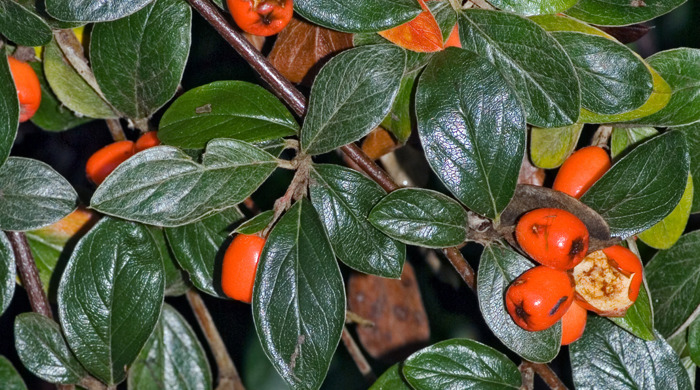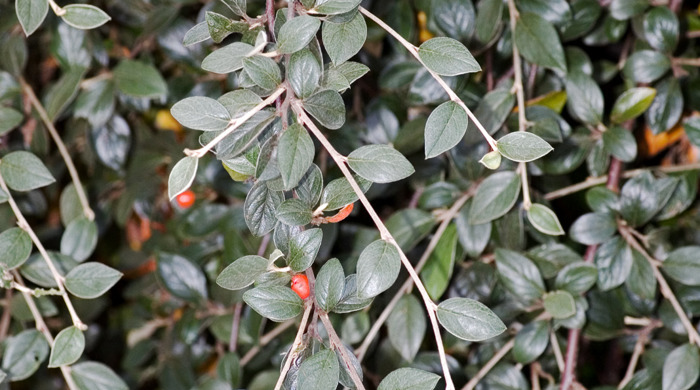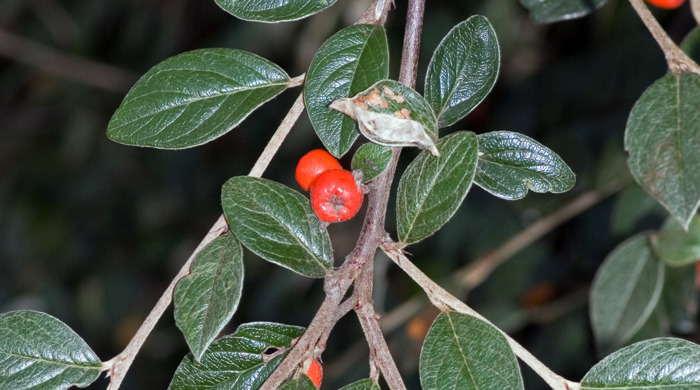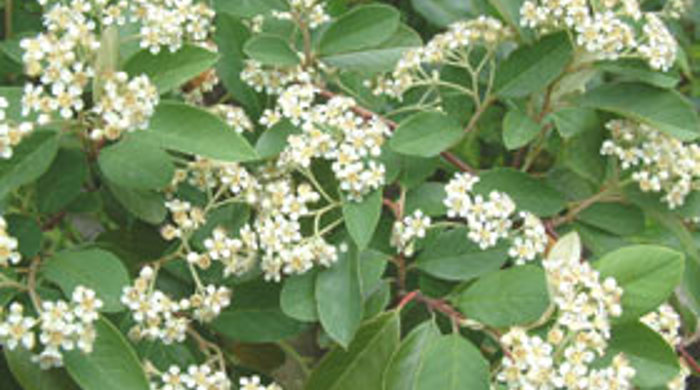Cotoneaster glaucophyllus and C. franchetii
Cotoneaster
Family: Rosaceae
Origin: Asia
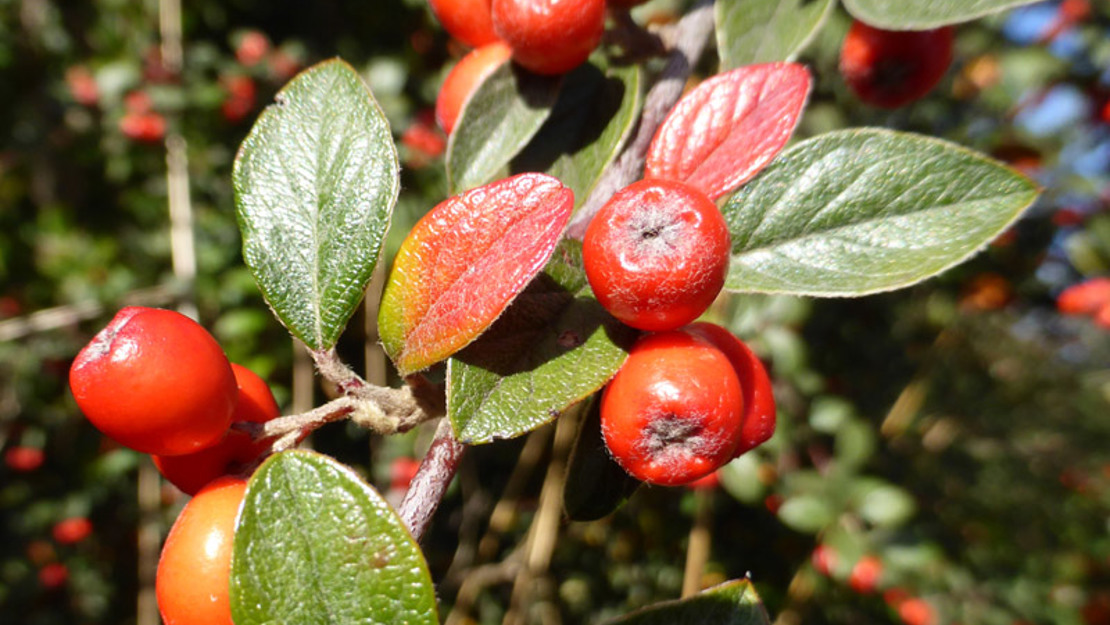
Regional Pest Management Plan (RPMP) status
- Whole region — Sustained control
- Hauraki Gulf Controlled Area Notice pest
General description
Evergreen shrubs < 3 m tall. Flowers are small, white and borne in clusters. Berries are red and borne in bunches.
What you need to know
To help protect our environment:
- You must not breed, distribute, release or sell cotoneaster within the Auckland region.
- You must not plant cotoneaster within the Auckland region, unless you are transferring an existing plant on your land to another location within the boundaries of the same property.
- You must destroy any cotoneaster on land that you occupy if it has been planted in breach of the above rules and you are directed to do so by an authorised person.
Habitats
Open scrub and coastal forest, lava flats, cliffs, forest and riparian margins, roadsides, track margins, grasslands, plantations, wasteland.
Dispersal
Seeds dispersed by birds. Human-mediated dispersal through dumping of garden waste and deliberate plantings.
Impact on environment
Form dense thickets, preventing regeneration of other plant species in coastal scrubland and grasslands.
Control
Site Management
Follow up treated areas 3 times per year. Encourage natural regeneration of native plants or replant treated areas where possible after 2-3 treatments to establish dense ground cover and minimise reinvasion.
Recommended approaches
Physical control
Method: Dig out.
Plant parts requiring disposal: Seeds.
Disposal options: Remove to greenwaste or landfill if practical.
Biocontrol
Biocontrol is currently not available for this species.
Community agrichemical control recommendations
No qualifications: Cut stump and paste freshly cut base of stems with metsulfuron gel.
Basic Growsafe certified: Cut stump and spray freshly cut base with 5g metsulfuron-methyl per 1 L of water.
Certified Handler/Experienced agrichemical user: Foliar spray with 5g metsulfuron-methyl per 10L of water and 20ml penetrant.
Caution: When using any herbicide or pesticide please read the label thoroughly to ensure that all instructions and safety requirements are followed.
